




By Roy Pilott
Mayors have greeted changes to how earthquake prone buildings are regulated – a move which will breathe new life into dozens of buildings in Waipā and King Country.
Across the country more than half of the quake-prone buildings will be removed from the Earthquake Prone Buildings register – about 2900 buildings. Around 1440 will face “more cost-effective remediation requirements” and 840 will require no remedial work Auckland, Northland and the Chatham Islands will be removed from the regime entirely “to reflect the low seismic risk in those areas”.
In Waipā mayor Susan O’Regan said a risk-based system made sense.
“It means we can focus attention and investment on buildings that genuinely put people at risk, rather than applying a blunt, one-size-fitsall rule,” she said.
Ōtorohanga mayor Max Baxter called it great news for all of New Zealand “especially for our small rural communities”. Waitomo
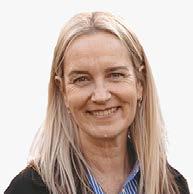
mayor John Robertson told The News “at last some common sense has been applied”.
In 2022 The News reported the Earthquake Prone Buildings Register, held by the Ministry of Business, Innovation and Employment, listed 42 buildings in Cambridge, 19 in Te Awamutu, three in Ōhaupō and one in Kihikihi.
Six of the most iconic were the Masonic Hotel, Museum and Water Tower in Cambridge, the Regent Theatre and Spindleys Building in Te Awamutu and the Clock Shop in Ōhaupō.
For Waipā, which sits in a medium seismic risk area, it could mean some older buildings – particularly in Cambridge and Te Awamutu town centres – may no longer be classed as earthquake-prone once the Ministry for Business, Innovation and Employment updates the assessment criteria, O’Regan said.
“That could ease a real burden for private owners, many of whom have faced uncertainty and potentially crippling costs under the old system.
“As a Council, we’ve already completed seismic assessments on a small number of our own buildings, like the Cambridge Museum, Ōhaupō Memorial Hall and the Roche Street office and Museum building.
“These reforms won’t change our duty and responsibility to address genuine risks, but they should allow for more proportionate, staged solutions that keep people safe without undue compliance costs.”
She said the priority must




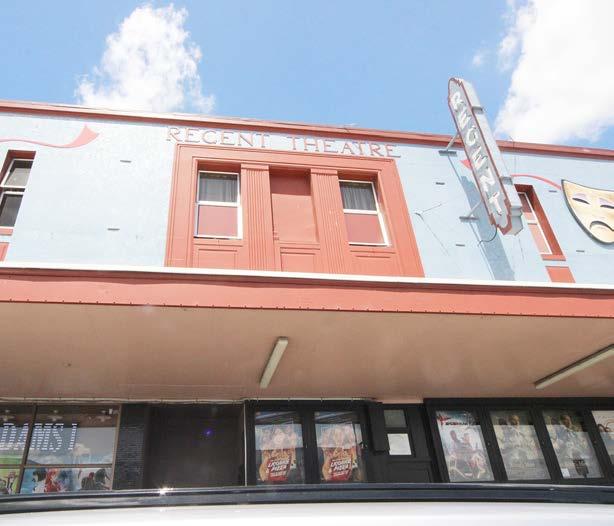
remain public safety, but the changes strike a better balance between cost and risk.
“It’s encouraging to see Government listening to Councils and communities and delivering a more balanced approach.
“What we need now is clear, practical guidance from MBIE so building owners - public and




private - can make informed decisions with confidence. This is about protecting both people and the places that give Waipā its character.”
In making the announcement Building and Construction Chris Penk said cities and regions were losing the businesses, churches, town halls and classrooms
that were central to their local economies and community spirit.
“For many buildings, the price of strengthening runs from hundreds of thousands to several million dollars. As a result, these buildings are often left empty and become derelict, making them even more dangerous to bystanders in an earthquake.”



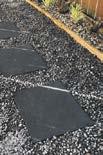
• Garden & landscape maintenance
• Landscape design & construction
• Planting, edging, mulching, and more



Visit: www.yardmatters.co.nz or call 0800 46 9273 for more! Care. Create. Transform.
• Custom features and outdoor enhancements admin@yardmatters.co.nz






are members of the NZ Independent Community




News/Editorial
Roy Pilott editor@goodlocal.nz
027 450 0115
Mary Anne Gill maryanne@goodlocal.nz
021 705 213
Viv Posselt viv@goodlocal.nz
027 233 7686
Chris Gardner chris@goodlocal.nz
027 231 7007
Advertising Director
Janine Davy janine@goodlocal.nz
027 287 0005
Owner/Publisher
David Mackenzie david@goodlocal.nz
Office/Missed Deliveries
07 827 0005 admin@goodlocal.nz

By Jon Rawlinson
New Zealand’s latest “bird of the year” is not a common sight in our skies – but they can be seen at Sanctuary Mountain Maungatautari and the Ōtorohanga Kiwi House.
The kārearea (pictured right) –New Zealand’s only falcon – pipped the kea and karure or black robin to the 2025 title.
And readers might not have seen them in the flesh – but they have been in wallets since the second set of New Zealand decimal bank notes were issued in 1992. The kārearea is on the $20 note.

“You have five votes in Bird of the Year and the kārearea was definitely in my top five,” Tori Budd from Waipā’s Sanctuary Mountain Maungatautari told The News.
Although not endangered, the bird is classified as threatened.
“There are enough birds so that the population is relatively safe, but they’re still at risk due to population declines from predation and loss of habitat, for example,” Budd said.
“We don’t know their exact numbers [at Maungatautari] because they reintroduced themselves – they found their own way here. They’re now happily breeding and
Facebook Marketplace has become the go-to spot for locals looking to buy or sell everything from second-hand couches to kids’ bikes.
It’s convenient, free, and often full of great deals. But behind the friendly chat bubbles and bargain prices lurk scammers who are becoming increasingly sophisticated – and increasingly local.
In a recent case a victim, who listed a coat for $100. Within hours, she was contacted by a buyer who claimed to be out of town but offered to pay via e-transfer. The buyer sent her a link to complete the payment, which looked legitimate. But instead of depositing money, the link allowed the buyer to withdraw $700 from the victims account. By the time she realised what had happened, the buyer had deleted all messages and vanished.
This isn’t an isolated incident. Scammers are now impersonating trusted services like NZ Post, sending fake links that mimic official websites. Sellers are tricked into entering their bank details, believing they’re confirming a payment. In reality, they’re handing over access to their accounts.
As a Community Constable, I’ve seen the frustration and financial loss these scams cause. What’s worse is that many victims
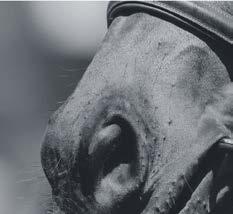
Your trusted local supplier of premium feed for horses, livestock, poultry, and pets. From tailored equine nutrition to everyday farm and pet essentials, we’ve got everything you need. Quality products, expert advice, and friendly service. The same quality service and products just a new and improved location!
regularly seen by staff, visitors and volunteers.”
Nearby Ōtorohanga Kiwi House has a pair of kārearea in residence.
The kārearea, our native owl the ruru and the kāhu – the commonly seen harrier hawk – and the introduced barn owl are classed as New Zealand’s four birds of prey. The barn owl qualifies because it was not deliberately introduced.
The kārearea plays a role in pest control, feasting on such introduced quarry as rodents, sparrows, pigeons, ducks and rodents –though its diet before those pests were introduced was native species.
A high-speed hunter, it is capable of reaching speeds of 200 kilometres an hour when diving.
In its 20th year, the bird of the year poll has again helped raise awareness of the need to protect native species, Forest and Bird’s chief executive Nicola Toki said.
“Habitat destruction, climate change and introduced predators continue to push many species towards extinction – but public awareness can be powerful,” she said.
“People fall in love with these birds and once they know their stories, they care, they advocate and they act.”
As the seasons change so does our view of the town and countryside. Blossoms and bulbs aplenty to see and admire. They quite brighten our lives from the dullness of winter. Waipā Parks and reserves people from council have been busy with the town gardens, which look splendid, a great variety of colours. I make a plea to those chosen to sit around the council table to give thought and consideration to allow funding to go to i-Site. It is as vital to our town as the well-stocked and staffed library and both are appreciated.
Janet Smith Te Pahu
As a retired Chartered Accountant, in my lifetime there have been two Prime Ministers, one National and one Labour, that had they carried on in office we would have seen Central Government heading towards bankruptcy, in other words, living beyond its means.
On the local scene in Waipā we are heading towards the same problem; if the rate ratio of debt to income continues the way it is now then by 2029 Waipā would reach its allowable debt ceiling, an equivalent to you and I having a 100 per cent mortgage and no longer having ownership of our home.


feel embarrassed and don’t report it. But these scams are not your fault
– they’re calculated, manipulative, and designed to catch even the cautious off guard. So how do we protect ourselves?

• Meet in person in a public place –preferably during daylight hours.
• Use cash or secure payment methods like PayPal’s Goods and Services.
• Avoid clicking on payment links sent by buyers or sellers.
• Check profiles for signs of fake accounts –new profiles, no friends, or generic photos.
• Trust your instincts. If something feels off, it probably is.
• Buy the seller. This means doing some due diligence on the seller. Check their Facebook account. If it is a new account? Do they claim to be local but know anything about the area? If this is the case, walk away from the purchase. Facebook Marketplace can still be a great tool for our community – but only if we stay informed and alert. If you’ve been scammed, report it to Police. Your story might help prevent the next one.
We need a council to have the financial knowledge and experience to arrest future rate increases greater than 15.5 per cent and decrease this increasing debt. The 2025-26 15.5 per cent rate rise in Waipā is the third highest in the country, whereas Whanganui, having realised their problem, has corrected their position, resulting in a 2.2 per cent increase, the lowest in the country.
So we need a high rate of voting and ensuring that we get the right councillors to tackle this serious problem and enable Waipa to move on with the region’s social and environmental issues and needs.
Peter Vonlanthen
Te Awamutu
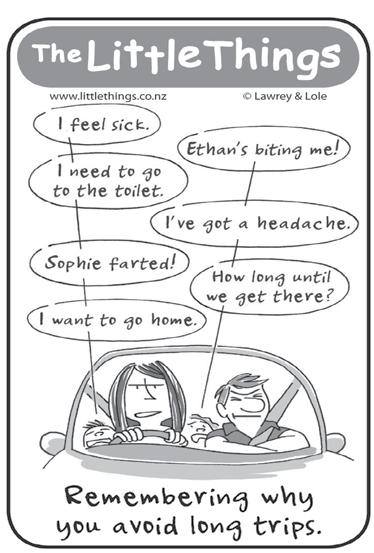


Waikato Regional Council has approved notification of a decisions version of a new coastal plan, which will have implications for the region’s 1150 kilometre-plus coastline including west coast harbours like Kāwhia, Aotea and Whāingaroa. The new coastal plan aims to protect the region’s coastlines, marine ecosystems and community values while enabling sustainable development.
Hamilton’s Big Band is doing a mini tour this month – and it will include a performance in Te Awamutu on October 11. The “Back to Basie” programme also includes Hamilton and Morrinsville.
At the 2025 Dairy Industry Awards last weekend in Mount Maunganui, Putāruru’s Thomas and Fiona Langford were named the 2025 New Zealand Share Farmers of the Year, Martin Keegan from Taranaki the dairy manager and Pieter Van Beek from Hawke’s BayWairarapa dairy trainer of the year.
Author Roimata Small will return to her marae, Te Koropatū Pa just north of Te Kūiti on Saturday to launch her book Hauoroa, and for a workshop based her first book, Understanding Te Tiriti.
The Breast Cancer Foundation is calling of people to volunteer for the charity’s Pink Ribbon Appeal which will be held on October 17 and 18.
The deceptive behaviour of thieves preying on people who use the popular marker place site, part of Facebook, is highlighted this week on page 2 by senior constable Ryan Fleming in our weekly On the Beat column.
By Chris Gardner
A claim farmers could halt the implementation of a Waikato Regional Council water quality plan change by “voting in the right people” has been dismissed.
Plan Change One was developed by a 24-member collaborative stakeholder group more than a decade ago and is before the Environment Court with 24 appeals on more than 1000 points. A decision is due by the year’s end.
Waikato Regional Council Waipā-King Country candidate Garry Reymer suggested the plan could be stopped when he spoke at a Federated Farmers candidate meeting on September 18 in Te Awamutu.
“Plan change one is not a given,” Reymer said. “There is a chance to stop it, with the right people around the regional council. Farming should not be a consented process, it should be a permitted activity, and we
need to make sure it stays that way.”
Waipā deputy mayor Liz Stolwyk, who is standing against Reymer, her brotherin-law, said he had got it wrong.
“It has now reached the Environment Court, so that’s not a process that councillors can be part of, or influence,” Stolwyk said. “Garry is incorrect and certainly giving out the wrong information.”
“Right now, it’s sat at a government and ministers level, and they should be talking to regional council staff and councillors.”
Earlier in the month council chair Pamela Storey used Facebook to say some of what was being said about Plan Change One was “simply incorrect”.
“One thing is clear: PC1 is before the court so no elected member or executive of Waikato Regional Council has the ability to influence the process,” Storey said.
“No councillor, including the chair, nor executive of WRC, nor candidates that say
they’ll stop it if elected, can stop it. Only the Government can halt proceedings at this point through legislative change. And despite what some might be saying, the recent legislation, which aimed to halt council planning processes, does not apply to PC1.
“As a dairy farmer in the PC1 area, I understand the frustration of this drawnout process and the angst of the unknown. But I’m committed to making sure that landowners and farmers hear honest information about where we are at in the process and will continue to enable WRC to work closely with our dedicated farmers and food producers as we navigate the next steps, on behalf of our industries, our communities, our region, and our environment.”
Storey’s post directed readers to a post on the council website “setting the record straight” on Plan Change One.
“The plan change cannot be withdrawn,” the post said.
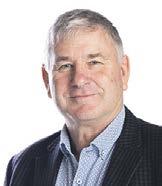
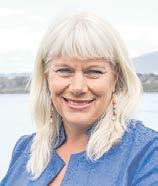
Reymer said he was not surprised by Storey’s post.
“I see it as being defensive,” he said. “I would not expect anything different from her in her position. I am not surprised by it. There’s definitely truth on both sides.”
Reymer said if the majority of the next councils members were opposed to the plan change, they could approach the Government and ask it to step in.
Reymer said the Act Party, a coalition partner in the current government, was strongly opposed to
Plan Change One and had launched a campaign to stop it.
Act is promoting a petition calling on the council to immediately suspend work on the plan change and commission a full economic evaluation before proceeding. At the time of going to press just over 200 signatures had been collected.
Reymer planned to meet Act Party MP and environment spokesman Simon Court yesterday (Wednesday) to discuss the next steps in stopping Plan Change One.
By Chris Gardner
The company wants to burn rubbish to create energy – but the trail on Global Contracting Solutions’ plans has gone cold. It has been six weeks since the Environmental Protection Authority revealed it had stalled a hearing into the Te Awamutu project because the company owed fees. And it has been almost that long since The News was able to make contact with Global Contracting Solutions.
Then, director Adam Fletcher told The News application costs had doubled one month before the inquiry and the company was working with the EPA to settle the matter.
Efforts to confirm the state of play with the EPA
this week did not shed any more light – it repeated its statement that it was working with the company but did not respond to a question about when it and the company were last in contact.
The independent board of inquiry into the proposed plant was halted in midAugust when the EPA suspended the application. Neither the authority or applicant have indicated when the outstanding bill for the application and three-week hearing might be settled, and the suspension lifted.
University of Waikato Te Piringa Faculty of Law Professor Barry Barton said it was a difficult situation in terms of where the statutory process now goes.

Barton, a director of the Environmental Defence Society, submitted against the application on the grounds that adverse effects were real, quantifiable and serious.
“I can’t see anywhere in the act which allows the EPA to close the file for nonpayment after any particular period of suspension. The act does provide that if the payment is made, then the suspension is lifted, and processing will continue. But the act doesn’t say how long things can go on like that. One can only speculate. It leaves everybody in a state of suspense. One wonders how it could be brought to an end.
The authority received 2173 submissions on the plan. Nearly two thirds were concerned with the effects on air quality, emissions, and
human health.
Don’t Burn Waipā spokesman Nick Cantlon said the pressure group was puzzled about the delay in the process two weeks away from the hearing commissioners announcing a decision.
“We have asked the Environmental Protection Authority how long this pause could be in place, unfortunately we have not had a response that addresses our questions.
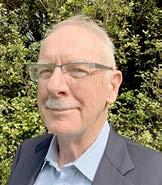
“The state of ‘limbo’ is very disconcerting and unsettling for our community, many of whom have put their lives on pause while we wait for a decision. People deserve to have this case closed so they can move forward with their lives and have confidence investing in Te Awamutu again.”
The company owes more than $100,000 to Waipā District Council and Waikato Regional Council, - who both submitted against the plan - but what it owes the Environmental Protection Authority has not been revealed.



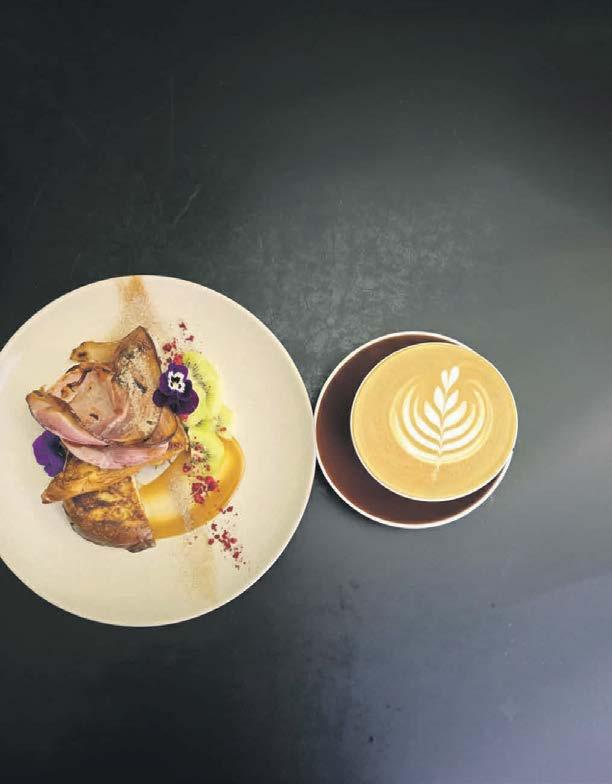















By Jesse Wood
Waipā siblings David and Sarah Tasker were not among the winners but are celebrating getting on the World of Wearable Art stage as 2025 finalists.
“… we didn’t take home any awards, but just getting onto that stage is a huge win. Our category was huge, with 17 other finalists,” David Tasker said.
Across three categories – New Zealand, avant-garde and neon –100 designers from 17 countries put in 86 entries.
The siblings are part of four generations living in Te Awamutu and the whole family pitched in. They learned their fate at the TSB Arena, Wellington last Friday.
David has been creating garments for six years, but this was the first project alongside Sarah.
Their garment, titled A Sight for Sore Eyes, was in the neon category.
“This piece is inspired by home - Te Awamutu, family, the Rainbow Community and of course neon lights,” David said.
“We have the Waikato River running down the front of the garment in pink stones.
“Inside the cape, I embroidered roses with yarn and LEDs, to give the vibe of neon lights with a nod to Te Awamutu, our hometown, and the Rose Town of New Zealand."








By Jesse Wood
A founding member of the Kāwhia Volunteer Fire Brigade, Bob Blackwood, celebrated his 100th birthday last week.
Now Te Awamutu-based, Bob said he’s had a happy life and had never been to hospital until age 96.
“I’ve had a strenuous few days celebrating my age. I’ve been very much honoured by so many people. I’ve had messages from the King and Queen and the prime minister,” Bob said.
“[The secret is] caring for myself physically. I was never ill and I kept active. It must be in my family bones because I had two aunties that were over 100. One was 104 when she died.”
The Camellia Resthome resident celebrated his century at the Te Awamutu RSA on September 21 with countless friends and family members, including relatives from Australia. Five generations were in attendance.
Bob is the father of four sons - Mick, Bill, Allan and the late Patrick - grandfather of nine, great grandfather of 16 and great great grandfather of two.
His beloved wife of 66 years, Ruth “Sis” (nee Gilbert), died in 2013, aged 89.
On Bob’s special day, Camellia staff put on a birthday morning tea.
“That was really nice but I’m a bit tired of parties now,” he said.
Bob was born in Hamilton on September 23, 1925, to Winifred and Robert Blackwood. After his mother Winifred’s death in 1936, Robert raised his son and three daughters.
Bob grew up in Waihi before moving to Pokuru and Hamilton, followed by seven decades in Kāwhia and the last four years in Te Awamutu.
enjoyed playing sports – tennis, cricket and rugby.
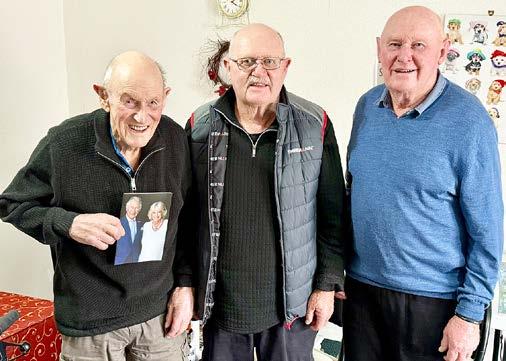
“I had a lovely life in Waihi. My father looked after us very well,” Bob recalled.
“We managed to struggle through the recession in the 1930s. It was pretty horrible.
“The country went broke and everything seemed to go wrong until Michael Joseph Savage started the Labour government, found employment and had all sorts of processes going to get the economy going again.
“Between then and the war in 1939, things weren’t too bad. [During World War II] it was pretty run down.”
He loved cars and became a garage




apprenticeship contract for me, so I left there,” Bob said.
Following the war, Bob moved in with his grandparents at Pokuru.
“I went to Craig Motors, the Ford dealers, and had an interview with Jim Craig. I told him I wanted to arrange an apprenticeship. Jim looked me up and down and said, ‘you’ve got a fortnight and if it doesn’t work, you’re out the door’. I was there for eight years and I loved it.
“I did all sorts of things. I was sent to the Ford factory in Wellington and would bring
A 12 month stay in Hamilton saw Bob work for Bedford and Vauxhall agents, Waikato Motors (now Ebbett Toyota).
“I met Sis on my very first visit to Kāwhia, when I still lived in Waihi. One of my friends’ family bought a bakery business in Kāwhia. I went to visit him and I met my dear wife,” Bob said.
“She was a lovely lady and we had a lovely life together.”
The Kāwhia Garage came up for sale and Bob took the opportunity to move there. He married Sis in 1948.
Bob owned the garage for more than three decades, retiring at 59 due to feet problems.
“I lived in Kāwhia for 70 years. My wife and I were happy living there. We lived by the school and looked out over the harbour,” he said.
Bob participated in many community positions and clubs including indoor bowls, outdoor bowls and the vintage car club.
He was a prolific photographer, producing hundreds of slides and photos, a great restorer of cars, a Citroen dealer in Kāwhia and fixing hydraulic Citroens was no problem for him.
Bob was a member of the Eagles Golfing Society and with 60 years involvement at Kawhia Golf Club, he became a life member there and a justice of the peace (JP) life member.
In 1957, he became a foundation member of Kāwhia Volunteer Fire Brigade and went on to be fire chief and a station officer, serving for 32 years.
Son Allan said his dad had restored many vehicles. He has two and brother Bill has two. Since moving to Te Awamutu four years

















COMMUNITY OWNERSHIP KEEPS
LOCAL DOLLARS WORKING HARD FOR WAIPĀ
In a time when whānau are feeling the pinch and rising living costs are squeezing households and businesses, Waipā Networks is showing what being community-owned means, powering people, not profits, and returning value directly to its customers.
In the past financial year, Waipā Networks reported* more than $14 million returned to the community through discounts, sponsorships, payments to suppliers, and salaries and wages. This proves that local ownership delivers real value, not only in power reliability, but also in economic well-being and social impact.
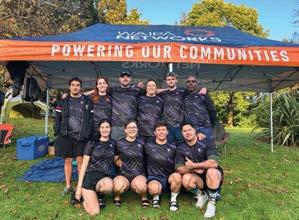
Waipā Networks Trust Chair Sarah Matthews says many in the community still aren’t aware that Waipā Networks is owned by its customers through the Waipā Networks Trust, meaning a share of profits goes back to the community.
“We distributed $5.4 million in discounts to our customers via their electricity retailers in the last financial year, which is a direct benefit of our ownership model,” Matthews says.
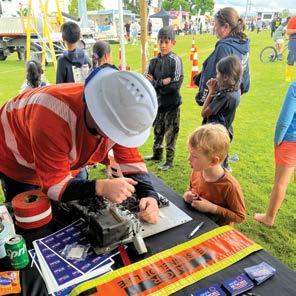
Waipā Networks chief executive Sean Horgan says investment in network upgrades, such as the new 33kV zone substation in Hautapu, delivers direct benefits to the Waipā community, increasing capacity to support local growth and strengthening reliability for existing customers.
“For households and businesses, it means greater confidence that the network can keep pace with future development,” Horgan says.
“While our network has historically operated as a low-cost 11kV system that served the community well for many years, the time has come to look ahead. Over the past 18 months, we’ve focused on future-proofing the network through targeted infrastructure projects and upgrades,” he adds.
While Waipā Networks is investing to make the network stronger for the future, Horgan acknowledges affordability matters to every household and business.
“It’s not just about keeping the power on; it’s about keeping costs fair and supporting the communities we serve,” he says. “Customers can feel confident they’re receiving good value as well as a reliable service.”
The network’s commitment to supporting whānau experiencing energy hardship has also grown steadily over the past three years.
In 2022, the team partnered with Ecobulb to distribute over 65,000 energy-efficient LED light bulbs across Waipā, helping households reduce their power use and lower their bills. This was followed in 2023 by a free Home Energy Assessment programme, which reached 500 customers with personalised advice and practical tools, such as LED bulbs and efficient showerheads.
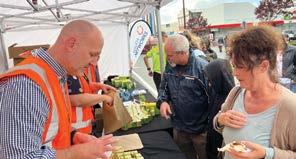
That same year, the Winter Warmer Pack Programme was introduced, including slow cookers, hearty ingredients, and vouchers for fresh produce to bring comfort and kai to
“More than 600 people have benefited from the Winter Warmer pack programme this year, more than doubling last year’s total, thanks to partnerships with Cambridge Community House, Kainga Aroha, Ko Wai Au, and the generosity of local sponsors and the Waipā community,” says Horgan.
More than $100,000 in community sponsorships has already been invested this year, including two rounds of level one sponsorship to help grassroots groups access support for projects that matter.
Annual sponsorship programmes continue to support a wide range of local initiatives, from vehicle sponsorships for the Te Awamutu and Pirongia Volunteer Fire Brigades, Ko Wai Au and Cambridge Community House, to backing new events like the Te Awa Lights Festival, Farah Palmer Premier women’s rugby cup, and local Christmas parades.

Other initiatives championed safety, education, resilience, and future technologies, including support for CommSafe and Safer Cambridge – Neighbourhood Support groups, which provide neighbourhood safety services across the wider Waipā community.
As the platinum sponsor of the Waipā Business Awards for over 30 years, and an active member of both the Cambridge and Te Awamutu Chambers of Commerce, Waipā Networks plays a key role in regional economic development. By contracting with local suppliers and creating employment opportunities, the company is helping build a stronger, more resilient Waipā. With another round of customer discounts on the horizon in October, Matthews says Waipā Networks is reinforcing its commitment to value for money, community wellbeing, and fair pricing, all made possible by its community trust model where every dollar stays local.

By Jesse Wood
A new tool in the form of games for students to learn about the Maungatautari to Pirongia ecological corridor has been created.
The Taiea te Taiao Education Box was launched last week at Pirongia Forest Park Lodge.
It was put together by the New Zealand Landcare Trust, the lodge, Enviroschools and Pūrekireki Marae.
“The games were a collaboration. We started the box more than a year ago. We’ve been trialling the games when we can, especially at conservation week events,” Landcare Trust Maungatautari to Pirongia ecological corridor project coordinator Bexie Towle said.
“Last week we went to an event in Cambridge with lots of schools, so it was great to test them there.
“It’s teaching kids the concepts of biodiversity in New Zealand and what an ecological corridor can do to help.”
Te Pahū School, Te Awamutu Primary School, St Patrick’s and a homeschool group from Pirongia attended the launch event at the Pirongia Lodge.
“The games are anything from field games, where the start line was Maungatautari and the finish line Pirongia.
“We had stepping stones, hula hoops, which were safe areas
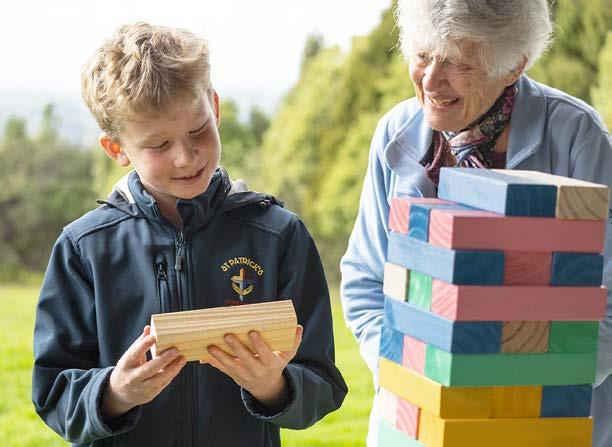
and different games to cross the corridor, whether it was a beanbag race or what’s the time Mr. Weasel, tag type race.
“The students learnt the concept of having the safe areas, stepping stones for wildlife. They were native birds that were getting across from one mountain to the other.
“Then we’d replay the games and introduce things like predators. Some of the students were weasels, rats and possums or introduce things like trappers. They would help control the predators and make it easier to cross the corridor.”
Another funder and participator at the launch was residential aged
care provider Bupa.
“We had a lot of fun with the Bupa residents that joined us and got amongst it in the games,”
Towle said. “They brought a lot of knowledge and enthusiasm for environmental care.”
There are also indoor games including charades, bingo and others for learning the cultural
history of the area.
Pirongia Forest Park Lodge and Pūrekireki Marae will house a box, while Enviroschools will also have a copy for schools to borrow and the resources can be downloaded from online.
“There’s been a real, coownership of the box. I guess that’s the idea of the corridor project is it’s a community project,” Towle said.
“We’d love to see the games rolling out and getting popular in schools. Maybe the students could make their own games and feed them back to us.
“Our dream, the point of the box, is to bring this project to the next generation because it’s a generational project.
“We need to get the kids on board. They’re going to be a huge part of seeing this project through.
“It’s going to take more than one generation to create a really robust ecological corridor.
Towle said the Waikato catchment is 1.4 million hectares, the Waipā catchment is 310,000 ha and the corridor is about 51,200 ha.
“We’re actively working on about 15 per cent of the Waipā. But we encourage everyone to be a part of the corridor as we would like to see biodiversity thrive across the landscape and connectivity across the Waipā,” Towle said.
“The birds, bats and insects don’t observe the region and district boundaries we’ve created.”

Check out who’s standing waikatoregion.govt.nz/candidates
Return your voting papers by post (before 7 October) or ballot box. Voting closes midday 11 October.


By Jesse Wood
Sally Whitaker believes the requirement needing to hold a vaccine pass to enter public facilities during Covid times caused significant physical and emotional trauma to a wide range of Waipā ratepayers.
She wants that acknowledged, but failed to get backing for a motion from Te Awamutu and Kihikihi Community Board members last week.
Whitaker was elected to the board in 2022 after sharing disillusionment with central government’s reach into local government matters and is not seeking for re-election.
“Public facilities in the Waipā District between December 2, 2021 and April 5, 2022 were only accessible to the public with a pass. This pass did not prove absence of disease but a willingness to comply and consent to the rules,” Whitaker said.
“The measures taken were discriminatory causing significant physical and emotional trauma to a wide range of Waipā ratepayers. Many other councils in New Zealand managed to safely keep public facilities open to all.
“Because decisions around access to public facilities have significant impact on the community, they must in future be treated with more gravity and consideration.”
She hoped for a public acknowledgement of the hardships caused as well as a conversation about stopping the same circumstances repeating, to “learn from the past and collectively grow into the future”.
She wanted the community board to recommend Waipā District Council adopt a policy to never discriminate on medical status again when it came to using public facilities.
The board decided the motion should not proceed in its current form.
“I hear both sides,” board chair Ange Holt said. “I feel for the people that weren’t, couldn’t or didn’t want to be vaccinated.”
Luke East


















A new movie came out in cinemas this past week - about Jacinda Ardern. And I think you should go and see it.
Some friends and I went along to its opening night at the Regent in Te Awamutu on Friday and saw something few ever get to see but all should understand - the sheer allconsuming pressure of being in that office.
I’ve been involved in politics behindthe-scenes for over a decade now, I’ve seen behind the curtain, and yet some of ‘Prime Minister’ surprised me.
I first met Jacinda just a few months before the resignation of Andrew Little catapulted her to the top. We were both at a function at The Helm in Hamilton, and as I recall she didn’t think twice about standing on a barstool to make a speech or taking the time to pore over an old newspaper about Michael Joseph Savage with a fan, or pose for a selfie with me.
But on a number of occasions since then I have been a vocal, and perhaps not always fair, critic of hers - to some extent that’s relatively by-the-by in politics today, but should it be?
I think it’s time we reappraise the premiership of Jacinda Ardern. The final months of Covid-19 still loom large in the minds of many but considered against many of her
predecessors, she governed at a time of somewhat unparalleled turmoil.
I remember the terrible attacks on March 15 and recall the pride I felt when Jacinda called it what it was, an appalling terror attack driven by hate. And then the speed with which she worked with all parties to pass rapid legislative change to ban the sale of military-style weapons in our peaceful land. She unified our country amidst that shared national grief and again during the first lockdowns, in a way that I don’t think we’ve really been since.
I was part of the Team of Five Million who stayed indoors and awaited the daily updates from the podium. After trying to crush Covid, the summer of 2020 was glorious… but then the vitriol began, and it hasn’t stopped since. That toxicity has spilled over into politics at all levels and has become a political cancer.
Here was a Kiwi who had the courage to put her hand up and step into the arena, someone with a passion for people and a more servant-hearted style of leadership - and yet in 2023 she left the arena (and the country), partly because all the hate and vitriol left her needing sleeping pills and combatting nightmares.
I only met her once while she was

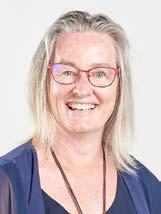
On the other side, she said the then chief executive Garry Dyet had to look after his staff.
“However, I really do like the idea of that public conversation about what happens [in the future].”

PM, despite being at several state occasions together, it was in a cafe. I was pondering what to order when I saw her protection squad encircle the room, and there she was stood directly behind me. She had far better things to do then wait behind me, so I let her go in front and she seemed so genuinely surprised - yet for me it was the most natural thing in the world.
Our leaders deserve respect, sometimes that’s letting them go ahead in the queue but other times it means allowing them their privacy, ensuring our civil discourse remains civil (I regret the fact that I have sometimes fallen short of that mark), and ultimately never forgetting that they’re human too and are simply trying to do their best.
Go see the movie and that is what you’ll see, our Prime Minister (regardless of whether you voted for her or not - I didn’t) trying to do what is best for everyone and in times of crisis trying to unify us and protect us. And doing it in a way that is pretty uncommon in our politics.
‘Prime Minister’ may not change your mind, but it might just open your heart.









A te reo Māori voice will ensure future generations grow up hearing and connecting with their own dialects, an AI expert from the University of Waikato says.
In testing and soon to be ready for use, the AI voice, created by Associate Professor in the University of Waikato’s Department of Software Engineering Dr Te Taka Keegan, is the first that speaks in the WaikatoManiapoto dialect.
Dr Keegan (Waikato-Maniapoto, Ngāti Porou, Ngāti Whakaaue) believes the future of te reo Māori depends on rangatahi, the younger generation, and his commitment to supporting the normalisation of te reo Māori for them has driven him to take on this project.
“Ideally, we need them to grow up listening to voices and interacting with te reo Māori that they can readily identify with,” he said.
“While learning and being supported by dialects other than their own is better than no language support at all, rangatahi form a stronger and more personal connection when they can readily engage with their own dialect.”
Being from the region, Dr Keegan wanted to make a WaikatoManiapoto accent and says other iwi will be able to use it as a template for their dialects.
“I think my approach really is looking after my backyard first but setting an example for other people’s backyards.”
He says this is important because future computing interfaces will
be operated through voice rather than keyboards, which requires computers to respond with highquality language.
“What has been created is a generated or synthesised voice that will speak Māori language sentences with a pronunciation that has been tuned to the Māori ear.
“We worked with a well-known local authority on Māori language to record her speaking thousands of Māori sentences. The sound recordings were processed to create a language model that can generate spoken sentences from written text. The model produces speech so realistic that it’s difficult to distinguish from the original speaker.”
An email from Google one Saturday night, offering an unsolicited award with funding, enabled the development of this technology.
Keegan wondered if it was a hoax but Google offered him an unrestricted funding gift that was to be used for ‘Protocols for responsible Māori language technologies’.
“That’s a lot of faith to put in someone who is working primarily on languages that won’t affect their bottom line,” he said.
While the donation was welcome and he is very grateful, he also feels that Māori should take responsibility for building their own technologies.
“We can’t rely on a large international company to come and save our language. We’ve got no chance if that’s the case
because there are 8000 languages in the world, and ultimately the people that most care about the language are the language speakers themselves.
“To save indigenous languages, indigenous people need to be building indigenous language technologies themselves.”
The Waikato-Maniapoto voice is expected to be ready to go in a couple of months.
“I’ve had that idea in my head for a long time. But since the money came in, I was able to employ a student over the summer, and some Māori language experts, to really bring that dream to fruition.”
It’s not the first time he has worked with Google. Around 14 years ago he spent six months working in the Google head office on the Google Translator Toolkit.
He has spent countless hours developing the current directions forward for te reo Māori in technology.
“It’s not something I have ever questioned. It’s really exciting for me. It keeps me up at night, when I should go to bed earlier.
“Plenty of questions buzz around my brain like what do we need to get to this? What steps do we need to take to make this happen? I never look back counting the hours.”
Dr Keegan is also Co-Director of AI Institute Māori and Associate Dean of Māori.
In June he was awarded the Living Icon award at the Te Hāpori Matihiko Awards in Christchurch.
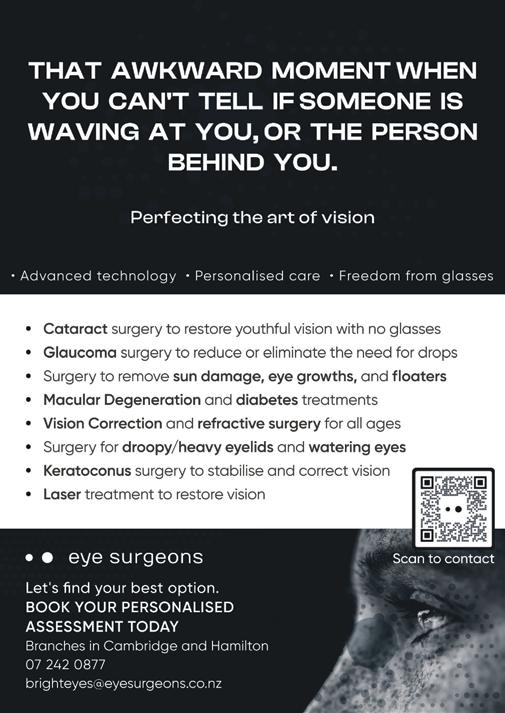
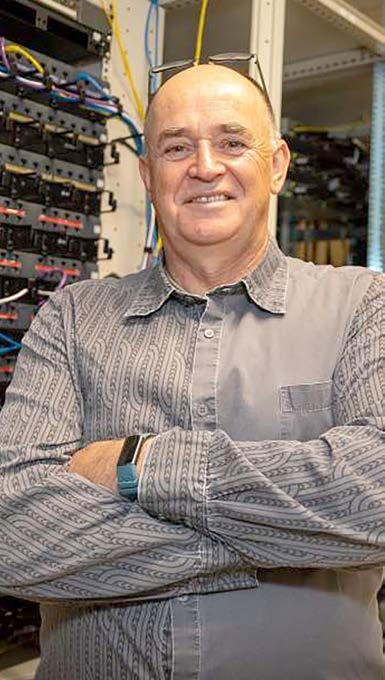

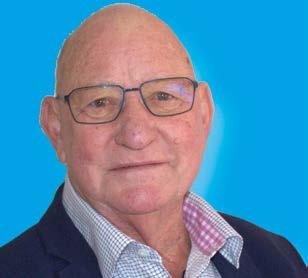


By Janine Krippner
When a hazardous geologic process is triggered, the consequences can be felt far away and in seemingly unexpected ways. Cascading hazards are those that are related as part of a sequence of events across both natural and human systems. Because of the multi-faced nature of these, the resulting impacts can be more significant or severe that the initial trigger.
One striking example occurred on 18 November 1929 when the magnitude 7.2 Grand Banks Earthquake struck off the coast of Newfoundland in the western North Atlantic, along the continental shelf. The shaking was felt in parts of Canada and the United States. Because of where the earthquake occurred, along the relatively steep part of the seafloor made up of layers of sediments and huge channels and canyons, a large, underwater landslide occurred. The volume of failed material is estimated at about 200 cubic kilometres.
When landslides happen under or near large bodies of water, they can trigger tsunamis. And this one did. About 2.5 hours after the earthquake, the tsunami impacted Newfoundland and was also recorded as far away as Portugal.
Even with the current tsunami warning systems of today, when tsunamis are triggered nearshore, we very well may not get any warning. This is why we urge people to evacuate to higher ground if you feel a long or strong earthquake along our coastlines. Waiting for an official warning may cost lives.
The destruction was catastrophic for communities, with more than 40 villages being impacted.
“Dwelling houses were reduced to a condition reminiscent of wartime description

of the effects of heavy shell fire. Former sites of gardens and meadows now thickly strewn with boulders, some of them as large as casks thrown upon the shore by the devastating force of the tidal wave,” St. John’s The Daily News reported.
Remembering that tsunamis are a series of waves over hours, not one giant wall of water, tsunamis are a truly terrifying process. Water heights can be intensified along narrow bays along the coastline, and in this case, waves reached heights up to 27 metre in these areas as the water surged up the landscape.
A total of precious lives were lost, and many others severely disrupted. Homes, businesses, ships and fishing gear were destroyed, and livestock were killed. To make matters worse, it took more than three days for help to arrive.
The story of what happened was eventually figured out in part because the landslide took out 12 submarine transatlantic telegraph cables. This information helped scientists to understand how the landslide moved, and how the three processes involved were related.
This sort of devastation reminds us of the necessity of understanding how our planet works not just as one isolated hazard, and how the interactions between different hazards can make things much worse for us. This also helps us to prepare. From this knowledge, we can understand what signs to look out for and know what actions we need to take to protect our own lives, and the lives of those around us, especially when we cannot rely on an official warning.
By Julie Guest
I clearly remember the local body elections from my childhood. Then, candidates attended many public meetings to present their message.
We lived next to a field - perfect for the purpose of gathering a bunch of neighbours. The candidates literally stood on a box to be seen, and some even had an old-fashioned megaphone so those at the back could (sort of) hear. What I most remember was the intensity of the questions and answers. There were strong feelings, both from the questioning public and the candidates with their differing opinions. There was vigorous debate. And that is a key word. Debate.
People listened to each other and responded, as opposed to simply defending their established views and working to shut down other opinions. There existed the possibility of learning from each other - and ultimately a better result for all eventuating.
As Te Awamutu residents prepare to vote in 2025, with seven candidates competing for three Waipā District Council seats and six vying for four community board positions, we rarely witness such authentic public discourse.
James 1:19 instructs us to be “quick to listen, slow to speak and slow to become angry”. Those childhood election meetings demonstrated this beautifully. Neighbours genuinely listened before responding, allowing space for minds to change and perspectives to evolve. Contrast this with contemporary political discourse, where positions of both voters and candidates are often predetermined and immoveable, regardless of information presented.
The soapbox democracy of the past also reflected Christ’s teaching about accessibility. When candidates stood on boxes in community fields, they made themselves vulnerable and approachable. There was no
barrier between leader and led, no exclusive venue. This mirrors Jesus’ own ministry style - teaching in accessible places where ordinary people could freely approach and question.

Today’s more professional campaign methods, while reaching broader audiences, risk creating distance between candidates and constituents. Social media algorithms can create those well feared rabbit holes, limiting exposure to challenging viewpoints. The personal accountability of facing neighbours directly has diminished.
However, neither should we romanticise the past or dismiss present realities. Modern communication methods enable greater participation for those who cannot get to a face to face meeting.
As Christians engaging with local democracy, we can advocate for genuine dialogue. We can model Christlike engagement by asking thoughtful questions and listening carefully to responses, demonstrating that political discussion need not always be adversarial.
First Timothy 2:1-2 calls us to pray for those in authority. Perhaps we should also pray for the restoration of civil, in-depth political debate - the kind that transforms communities. There are also those who do not engage in local body elections. Perhaps they believe that their vote will make no difference. But being a thoughtful voter involves more than ticking the box. It is a way of being informed about what matters in Te Awamutu not just for yourself, but your fellow citizens.
Voting is a privilege thousands of other people around the world will never have - so use your privilege.























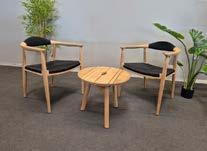













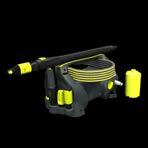
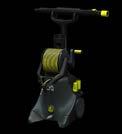
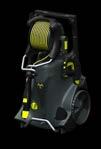
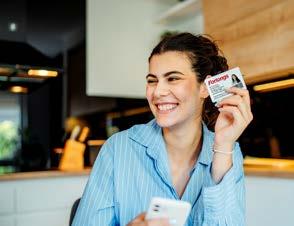
– with Mary Anne Gill
All that effort, all those words, all the advertising, videos and social media posts and what do we have to show for it with a week to go?
When The News went to press, election returns were encouragingly up on the same time three years ago although there would have to be concerns at the low turnout in the Cambridge ward.
Perhaps voters are still confused by all the issues and all the candidates.
Tamahere-Woodlands’ return in the Waikato district – which includes Bruntwood, Mātangi and Tamahere in The News circulation area – was looking good which could be a sign hometown mayoral candidate Aksel Bech has a show.
But Hamilton was dragging the chain and hoping a Your Neighbourhood promotion in Garden Place where the public could meet the candidates and see what the council does in the community would help.
There’s been no shortage of political drama in Waipā that should have sent voters rushing to the post box.
Take Roger Gordon’s notice of motion - supported by fellow Cambridge ward councillors Mike Pettit, Philip Coles and Liz Stolwyk - proposing a no-right-turn from Newcombe Rd into Tīrau Rd.
He withdrew the motion at the final council meeting after legal advice, including from Simpson Grierson, warned of significant risk to the council.
“If I’m re-elected, I’ll be back,” Gordon said. “I knocked my head against a brick wall but I will keep trying.”
Marcus Gower, chair of the Regulatory committee, didn’t get the chance to respond publicly at the time but later told The News that Gordon was trying to solve a problem that doesn’t yet exist - and
risk committing the council to a costly judicial review.
“More importantly, we as councillors take an oath at the start of the triennium to make decisions in the best interests of the whole district,” Gower said.
He criticised Gordon for not consulting Karāpiro residents about increased traffic on Hydro Rd, nor the wider district about potential costs. He also accused Gordon of electioneering.
“We need to stop, take a breath and let due process prevail.”
Another issue that’s resurfaced is fluoride. Kane Titchener, elected unopposed in Pirongia-Kakepuku for the Te Awamutu-Kihikihi Community Board, is part of Fluoride Free NZ. Waipā was ordered by the Medical Officer of Health to add fluoride to Cambridge’s water supply.
The group polled all 48 Waipā candidates, asking whether they would support pressuring the government to return fluoridation decisions to local councils.
Those who responded “yes”

were: Charlotte FitzPatrick, Sharon Stirling, Ian Hayton, Roger Gordon, Lyn Hunt, Hope Spooner, Bernard Westerbaan, Don Sanders, Chris Minnee, Stewart Dromgool, Gerda Venter, Dean Taylor, Graeme Allen and Les Bennett.
“Nos” came from Marcus Gower, Shane Walsh, Andrew Myers and Clare St Pierre. The other 30 candidatesincluding mayoral hopefuls Susan O’Regan and Mike Pettit - had not
Continued page 13
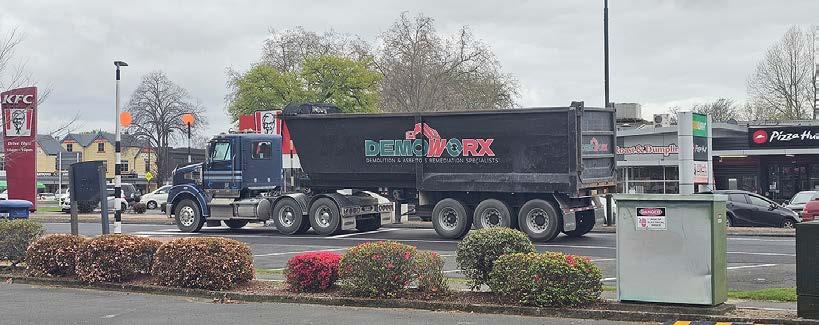

•





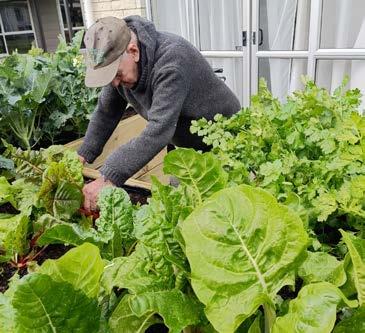

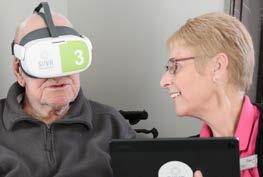
responded when The News went to press.
Meanwhile, O’Regan stirred debate with a social media post stating she would not accept financial backing for her campaign thereby allowing her, she said, to make decisions free of influence and favour.
An anonymous repost on another channel claimed her post was misleading, pointing to a declared donation from three years ago.
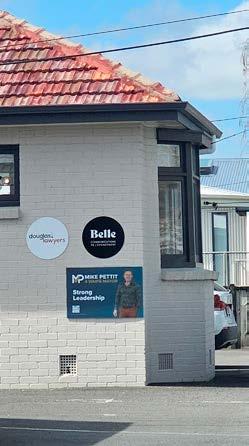
Belle PR - owned by former Waipā District Council communications manager Charlotte FitzPatrick - donated $4800 worth of communications advice during the 2022 elections.
FitzPatrick, now running for the Cambridge Community Board and backing Mike Pettit for mayor, responded on the post.
“I donated time to her campaign three years ago under my business name. But to be very clear, I did not post this anonymous post. It’s disappointing to see local politics coming to this. It would be nice to see the focus and energy put into the future, the big issues we are facing, and how our council will lead Waipā into a more positive situation.”
Candidates’ electoral donations and
Continued from page 12
expenses will be made available after the election. O’Regan was clearly front-footing the issue.
Campaign expenditure limits - $40,000 for mayoral candidates - apply for the three months from July 11 to election day, October 11.
Candidates must declare any donations of money, goods or services after the election. Volunteer labour, goods or services under $300, and candidates’ own money do not have to be declared.
Finally, former Hamilton mayor Margaret Evans has joined three others in making a Code of Conduct submission to the Local Government Commission prompted by city councillor Andrew Bydder’s expletive-laden rant towards O’Regan last year.
After an investigation costing more than $20,000, the city council found there was a material breach of the council’s Code of Conduct, censured Bydder and requested he apologise to O’Regan and to two disability organisations.
O’Regan and Hamilton mayor Paula Southgate, who lodged the conduct complaint against Bydder, both favour an independent arbiter.
Evans’ group has proposed a traditional oath or affirmation of office to allow mayors and councillors to be held accountable by colleagues and the public.
She had a simpler and less expensive option for the Bydder case though.
“If only Susan had invited Andrew in for a cup of tea! Or Paula had!”
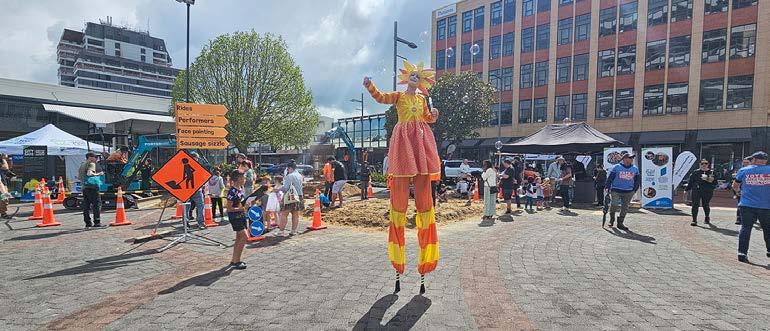


By Lizzy Crouch
The velodrome hums with energy as the team preparing for the World Masters in Roubaix, France gathers for another training session.
The sound of wheels on tape, click, click, mixes with the low rush of air. Beneath it all is the determination of riders who refuse to let age define them.
Conventional wisdom says sport gets harder as you get older. But for this group, the opposite is proving true. “We’re all getting older, but year by year we are getting faster,” says Leigh Mikkelsen. Teammate Tim Pawson nods: “We’re supposed to be going slower, but instead we’re getting faster.”
That doesn’t mean it’s easy. The riders speak candidly about the physical changes that come with age and the stereotypes that come with them. “All the menopausal talk, ‘isn’t it about time you slowed down?’ I’m like, what? No. It does get harder though. But it doesn’t mean you fight any less,” says Mikkelsen.
Instead of easing off, they all talk about how important it is to double down on recovery, sleep and smarter training.
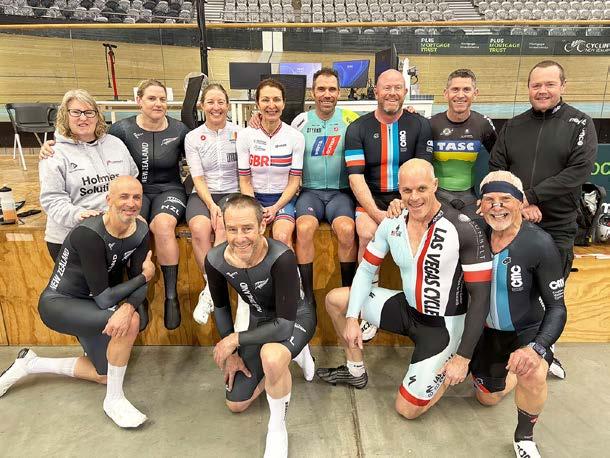
If performance is one motivator, community is the other heartbeat of the team. “Community is a big one for me, it’s everything,” one rider says. Another adds, “We’re not just riding, we’re part of something bigger.” For Tim Pawson, that sense of togetherness extends off the track too: “It’s super motivating to do this in a team [with wife Penny] and as a family that loves riding.”
Family and legacy surface again and again in the conversation.
“I’ve got three girls, and for me it’s about setting a good example, for them, and for women in sport,” says Monique Brake.
Tony Wilkinson shares a similar drive: “I’ve got three young boys who are 13, 11 and 9. I’ve always been keen to lead from the front
and motivate them.”
Respect, they all agree, is the true equalizer. “It doesn’t matter what level any of us are at, the mutual respect comes from knowing how hard everyone has worked to get where they are,” says Brake. “Just because someone is faster doesn’t
make them a better human being. If you get to the start line of any race, everyone knows how hard it was just to get there.”
The drive for challenge is another common thread. “I’ve always loved pushing myself, something new, something different. If there’s no challenge to overcome, there’s no satisfaction in achieving it,” says Chris Allington. He sums up his approach in two words: “Community and challenge.” Gary Mikkelsen shares his motivation: “I think mine is, it’s been a dream, but it’s also a massive personal overcoming of challenges.”
And then there’s the simple joy of riding. “Work can be stressful and I come here and the sound of the wheels over the tape – click, click - and the smell, and the wind rushes in my ears. It’s my happy place,” says Penny Pawson.
Together, these athletes are proving that the story of aging in sport doesn’t have to be one of decline. It was a privilege to sit among their chats about aging well and staying motivated, and to witness the way they share their experiences with one another and the wider cycling community.
The team will be lining up at the World Championships in Roubaix, France from Saturday until October 11 – we’ll all be cheering them on. • Lizzy Crouch is the Marketing and Events Manager at the Grassroots Trust Velodrome.
The future of lacrosse was on display at Albert Park in Te Awamutu last weekend.
Top youth talent from across the North Island was brought together by the under-15 and under-18 girls’ national championships and boys nationals’ series.
Te Awamutu and Cambridge continue to lead the way in the competition.
In the under-15 Girls division, the Waikato Sirens claimed the national title in a roundrobin contest, followed by the Waikato Rapids and Auckland.
The Sirens impressed with a full-
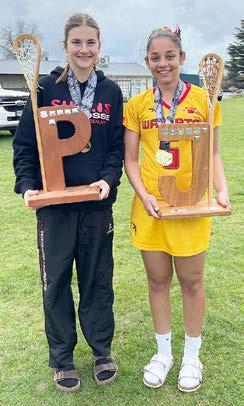
team dynamic, blending defensive grit, attacking flair, and relentless ball control - a foundation they aim to build on at the Australian National Tournament in Perth which is running through to Monday.
Several standout athletes from St. Peter’s School Cambridge were in the Sirens squad. They were looking for redemption from a second-place finish to Epsom Girls’ Grammar School at the New Zealand Secondary School Tournament in August.
Meg Cannon, Zoe Hannah and Jemma Burke each averaged five points across the tournament.
On the other side of the field, Auckland’s under-15 goalkeeper Sharaya Naidu delivered a standout performance under pressure, recording a 50 per cent save rate despite facing a barrage of shots from the Sirens.
The under-18 girls featured four teams.
Waikato Gold edged Auckland Blue in a thrilling final, while Waikato White took bronze over Auckland Maroon.
Waikato Gold’s success was driven by standout performances including Annelies Banks and Ava Gatie, who tied as the tournament’s top point scorers.
Gatie’s sharp finishing and drive kept Auckland Blue in contention throughout the final, while Banks anchored Waikato Gold’s attack with precision and poise.
Amelia Rettkowicz added composed ball control and exceptional stick skills to Waikato’s midline, though Auckland’s defensive unit deserved credit for reducing her shot percentage.
Tournament MVP honours went to two defenders from Cambridge, Maisey Butler (Waikato Sirens, under-15) and Piper Russell (Waikato Gold, under-18).
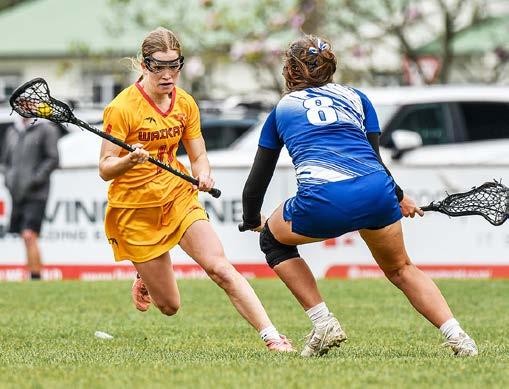
The boys’ divisions added further excitement, with Auckland and Waikato facing off in three-game series at both under-15 and under-18 levels.
The under-15 boys showcased the Sixes format — a fast-paced, high-scoring version of lacrosse comparable to rugby sevens.
With Sixes set to feature at the 2028 Los Angeles Olympics, its presence in Te Awamutu offered a glimpse of the sport’s future and the athleticism it demands.
The Hollands sisters, Makayla (Sirens) and Nicole (Waikato Gold), recently selected respectively for the Waikato under-16 and
New Zealand under-18 hockey teams, exemplifies this versatility.
Several under-18 athletes at the event recently competed at the Australian Nationals and others represented the country at the World under-20 Championships in South Korea.
The national men’s programme now turns its focus to the Asia Pacific Qualifier for the World Championships.
New Zealand Lacrosse has also launched an inaugural Sixes Women’s team for its first test in Hong Kong - December 26 to January 4.
I’m standing for re-election because I care deeply about Waipā - its people, its places, and its future.
This district isn’t just where I live - it’s part of who I am. Born and raised here, my strong family roots go back well over a century. I’ve farmed here, raised my children here, practiced law here, served my community here. I’d be grateful for your support so that I can continue serving and providing the leadership Waipā needs.

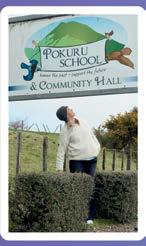





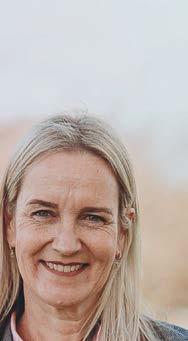
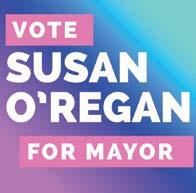


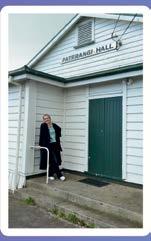

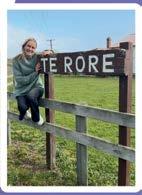






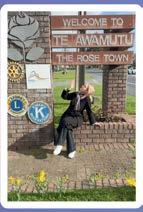



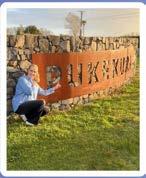






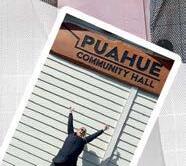



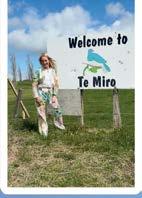




















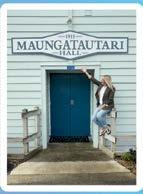





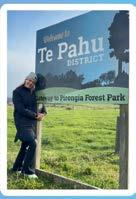




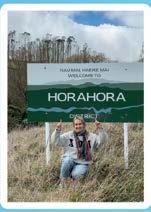




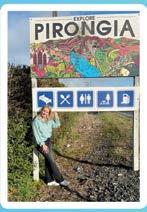



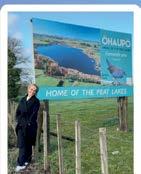



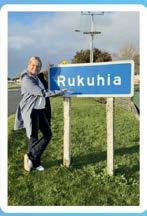






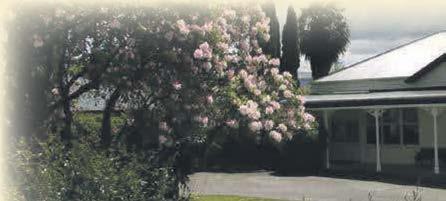
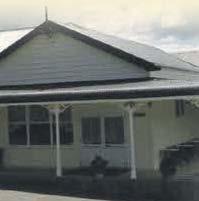

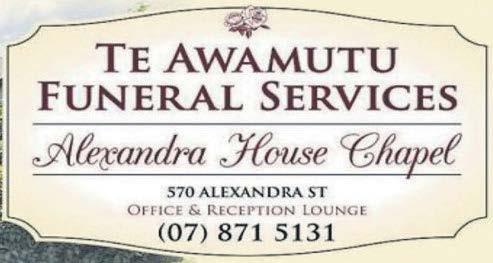


Across 1. Infected (6) 4. Deed (6)
9. Muffled (5)
(7) 22. Passage (5) 24. Intensify (6)
Last week
Across: 1. Lend, 4. Undies, 8. Against, 9. Verve, 10. Cute, 11. Starters, 13. Competent, 17. Cherubic, 19. Free, 21. Wield, 22. Uniform, 23. Starve, 24. Poll.
Down: 2. Elastic, 3. Dent, 4. Up-to-the-minute, 5. Divorced, 6. Eerie, 7. Feast, 8. Arch, 12. Smoulder, 14. Turmoil, 15. Scowl, 16. Seam, 18. Event, 20. Limp.
SPOUCOVUNPLANETSJI HEOLCAPRICORNTRVOP NHZLQTHERAMSCALESS
AQUARIUS

SEER STARS TAURUS THERAM TWINS VIRGO ZODIAC
SATURN
SCALES
SCORPIO





By Jesse Wood
In just his second year involved, Te Awamutu 17-year-old Mahonri Sunnex is chasing his volleyball dreams in the USA.
The 1.95 former Pekapekarau Primary School, Te Awamutu Intermediate and Te Awamutu College student is finishing his schooling in Arlington, Washington and staying with his grandparents.
As a dual citizen there’s the option of playing for the United States or New Zealand if he heads down the Olympic route.
“It all happened so fast,” mum Kira Krieg said “This humble, gentle giant child of mine is out there chasing his dreams. All of this is him.”
“I’m incredibly proud of him. Not because of just volleyball, but because he is chasing dreams and watching them unfold before his eyes. The kid just stepped off the plane and within a matter of a few weeks is now signed to a travelling club team – Blue Royals.”
Kira said Mahonri had sworn off sports, so she was taken back when he came home one day saying he was going to play volleyball.
“Volleyball is what brought him out of his shell and made him stay in school. It really brought him to life. He found his passion,” Kira said. “I fully supported him wanting to play. It’s been full steam ahead since then. He played for Te Awamutu College for two years.
“He also coached a junior team last year along with a teammate Sterling Te Huia. The team went undefeated and won their Waikato provincial division.”
This year Mahonri made the Waikato Representative reserve under-19 team.
Kira, Mahonri and younger brother Zion arrived in the US on July 17.
“The following day, we went to an open gym at the local high school. The organisers questioned the boys’ ability to play,” Kira said.
“I just said ‘They will be fine’. Within a few minutes, Mahonri jumped up with height and hit the ball down hard. There was a collective ‘woah’ in the gym.

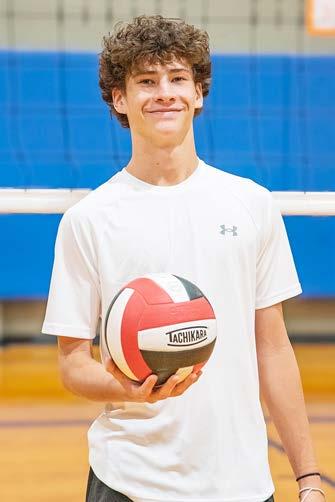
“Next thing we knew, we were getting phone numbers and emails and wondering where Mahonri came from. We received an invite to an exclusive invite only play night.”
On July 23, Mahonri attended the event with his mum and grandfather.
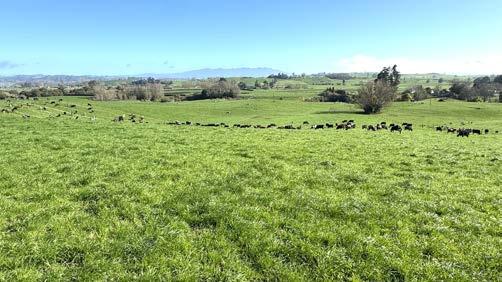
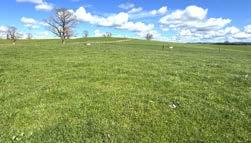



“The invite only night was with professional, university and high-level club players. A coach excitedly ran over to Mahonri and asked, ‘where do you live?’,” Kira said.
“Mahonri turned and looked at us with a panic and said, ‘I don’t know’, pointing to my dad and I.”
The coach’s team was based a few hours away from Kira’s parents’ place.
“The coach broke down the different teams in the area for us and who might be a good fit. He introduced Mahonri to one of the young men from Blue Royals and wished him luck,” Kira said.
“Mahonri got followed that night by other Blue Royals players and coach Tommy Sudiartate before receiving an invite to trial for their team.”
Six days later, Mahonri attended a Blue Royals open gym night, meeting the rest of the squad.
He trialled the next day and was picked for their travelling side.
“One of the tournaments will be right by his dream university, Long Beach,” Kira said.
“He will be travelling to California twice, around Washington State, Salt Lake City, nationals in Florida and possibly other tournaments such as Chicago.
“Had we arrived a few weeks later, this opportunity would not have been available.
The family is helping the youngster by raising funds towards through a garage sale this month. Funds will go towards Mahonri’s tournament fees and costs for the September 2025 to June 2026 season.
“We thought as he was Year 13 here, he would do a senior year there. With the credit transfers confirmed at the beginning of September, he’s come in as a junior at Arlington High School, allowing him to play for two years and potential to be scouted for a university team,” Kira said.
“If he grows another inch to 6-foot-5, the division one universities could put him on their recruitment roster for class of 2026.
“The best part for me, was when I said to Mahonri, ‘do you know how big this is?’, he responded ‘no, I just want to play volleyball’.”

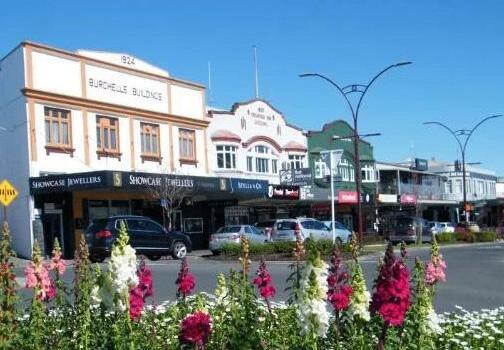






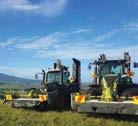









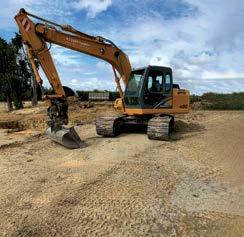




















5pm in the Main Office @ Te Awamutu College
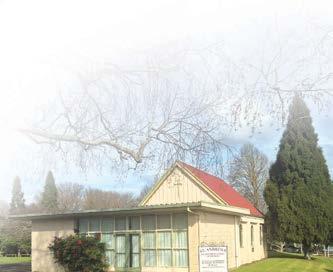
CHURCH SERVICES 10am
5th October
Rev Ken Wall Plus Communion





available New members Welcome
Enquiries T Bayly 027 533 5106 or P Adam 07 871 6884
CLEANER REQUIRED - for commercial and domestic with own transport and valid license. Ph 021 732 609

COLLINS, Robert “Bruce” – Passed away peacefully at his home in Te Awamutu on Sunday, 14 September 2025, aged 80 years. Beloved husband of Ula. Loving father and father-in-law of Ange & Mark, Matt, and Joe & Wendy. Adored granddad of Cam, Jacob, Dan, Kayla, Marcus, Blake, Ben, Eli and Jarred, and great-granddad of Meeakai. Finally at peace, Bruce will be deeply missed by family and friends. A family service and private cremation have taken place. Opening
Gorse, Ragwort, Thistles, professional, efficient weed sprayer operator. Relief Milker /Worker also available for employee/employer time off. Ph 022 0844 349

MAUNGATAUTARI ECOLOGICAL ISLAND TRUST
ANNUAL GENERAL MEETING
Notice is hereby given that the Trust’s Annual General Meeting is to be held on Tuesday 21st October 2025 in Te Manu Korokii Profile Group Education Centre at Sanctuary Mountain Maungatautari, 99 Tari Road, Pukeatua commencing at 3.00pm. Attendees are invited to join the Trustees for afternoon tea (from 4.00pm) at the conclusion of the meeting. Please RSVP via the QR code Enquiries by email to: secretary@maungatrust.org




Notice is hereby given that the 2025 Annual General Meeting of Ruapuha Uekaha Hapū Trust will be held on Saturday, 18 October 25, at Te Kauae Pā , 954 Mangarino Road, Hangatiki. Starting at 10am.
Agenda:
1. Karakia/Mihi
2. Apologies
3. Chairman’s Report
4. Financial Report
5. Election Results
6. Initiatives Report
7. Minutes of the Previous Meeting
8. General Business
9. Karakia Whakamutunga
10. Lunch 1.00pm
In the event of a tangi at Te Kauae Pā, an alternative venue will be advertised on the Trust’s Facebook page and website www.ruht.co.nz.

LAVERTY, Margaret Rose With heartfelt appreciation, Willie & family thank everyone for their well wishes & care following the passing of Margaret on 02.08.25. Special thanks to the staff of Te Awamutu Medical Centre, Waikato Hospital and St John's Ambulance for their wonderful care. Also, thanks to Garth from Te Awamutu Funeral Services and Vicar Julie Guest for their input and coordination of Margaret's funeral. The flowers, visits, cards, baking and prayers from those who knew Margaret have been gratefully received and have brought much comfort at this sad time, we thank you for your support. Blessings to all.














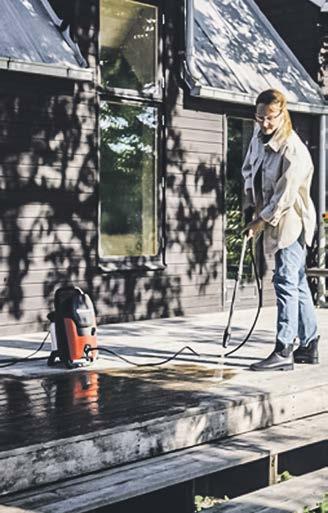




Compact and lightweight battery lawn mower that is easy to manoeuvre even in complex areas.

36V - 55L
Self-propelled, easy to use mower with dual battery slots for use with one or two batteries.

1.5kW - Max Pressure 125 Bar
Water Flow 320-460 Ltr/Hr - 6.5kg
Our most compact and lightweight model, ideal for easy and convenient cleaning of patios and garden equipment. Supplied with: 7m hose, foam sprayer, variable at jet and rotary nozzles.

1.8kW -
Flow 348-465 Ltr/Hr - 9.5kg
Ergonomic design with ultra exible hose,improved handle height, and exceptional stability. Smart features for simple setup, intuitive use and compact storage.
$499RRP




















